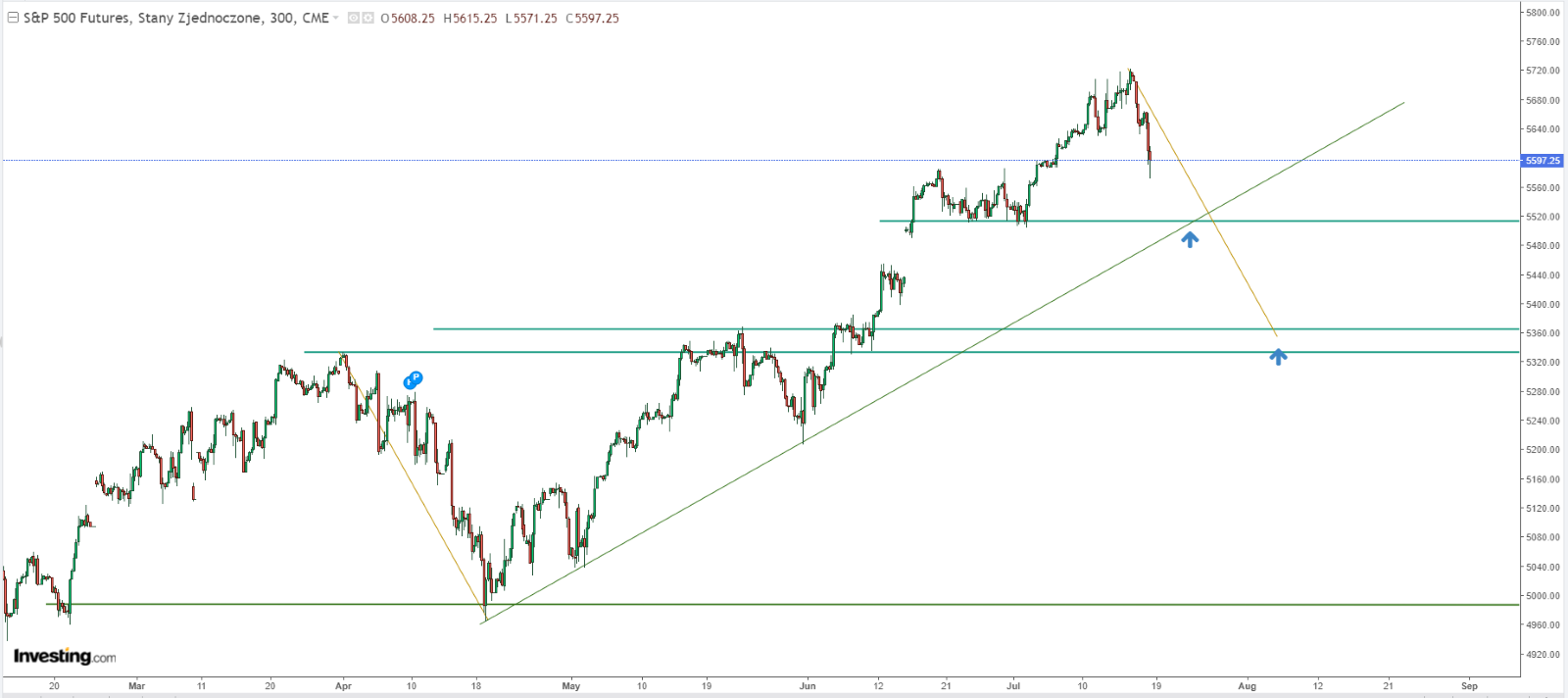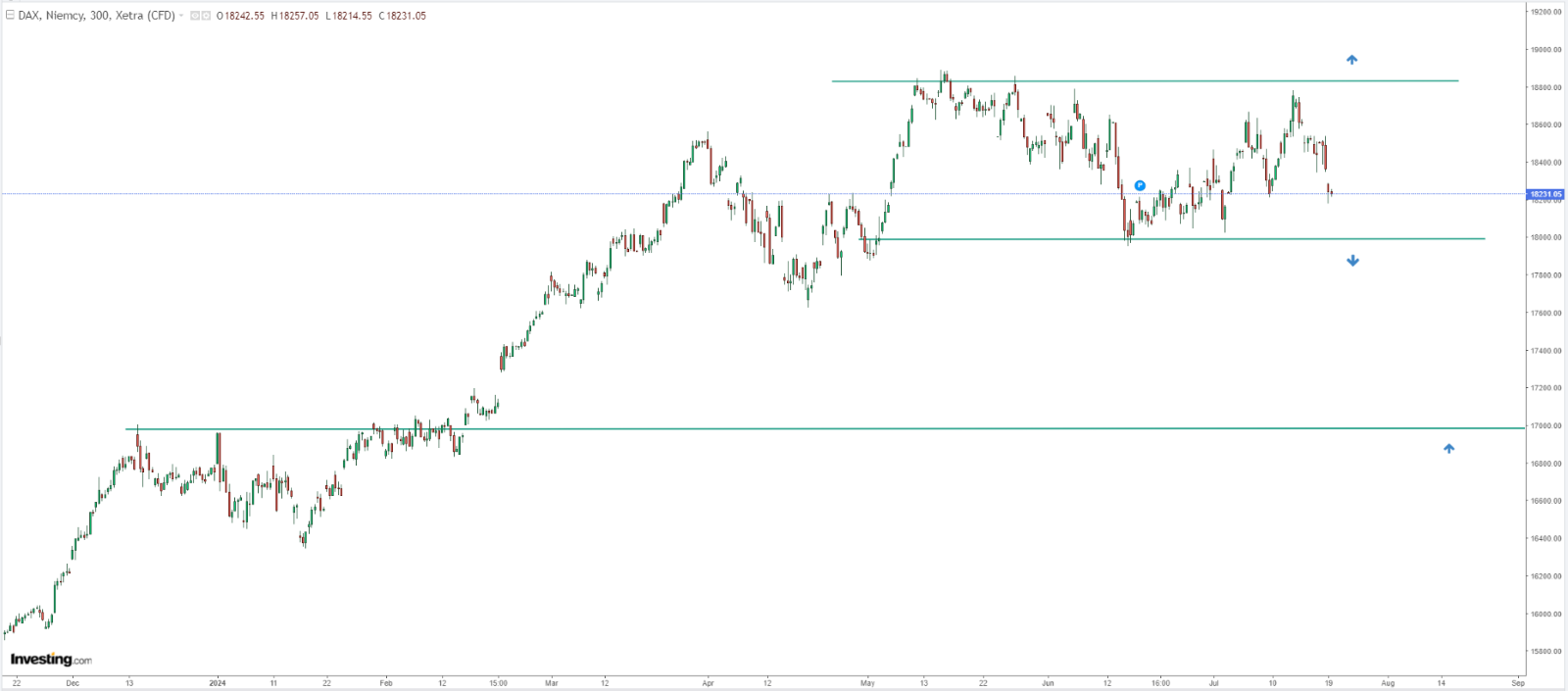- US stocks sold off once again on Thursday.
- The correction in the S&P 500 index appears to be gaining momentum.
- Meanwhile, the German DAX is moving sideways, and sellers could take over soon.
U.S. stocks faced a broad selloff on Thursday, as the market shed early gains in the trading session and tumbled deeper into a correction. Investor anxiety remains high, with the VIX, also known as the “fear index”, spiking to its highest level since May.
This drop comes after the first leg of the pullback on Tuesday was seen as a rotation into small caps. However, even the S&P 500 declined on Thursday, reflecting a broader selloff in stocks. This sentiment shift comes as the second-quarter earnings season heats up ahead of key tech names set to report next week.
Amid the ongoing correction, let’s take a look at the key levels to watch for the S&P 500 as the index tries to find a direction after declining for two consecutive days. Alongside that, we will also take a look at the technical situation with the German DAX after the ECB’s decision to hold rates steady at its latest meeting.
S&P 500: Key Levels to Monitor amidst Market Correction
The S&P 500 has entered a much-anticipated correction, marking its most substantial decline since April. This pullback follows a year dominated by bullish sentiment, which left little room for a significant downturn. The recent sharp declines suggest the potential start of a correction.

The first major concern lies around the 5500 mark, where an upward trend line intersects with crucial support levels. A break below the critical zone at 5400 points could indicate significant challenges for buyers and a potential trend reversal. In such a scenario, sellers may target the 5000 level next.
German DAX Facing Potential Selling Pressure
Since early May, the DAX has been consolidating, with its upper limit near historical highs just below 19,000 points. Given the recent U.S. market downturn, the DAX could experience a sell-off towards the lower boundary around the round number of 18,000 points. This aligns with the prevailing negative sentiment across the broader market.

If sellers manage to breach this support level, the next target could be 1,000 points lower at 17,000. However, a sentiment reversal and continuation of the uptrend might redirect investors’ focus towards the psychological barrier of 20,000 points.
